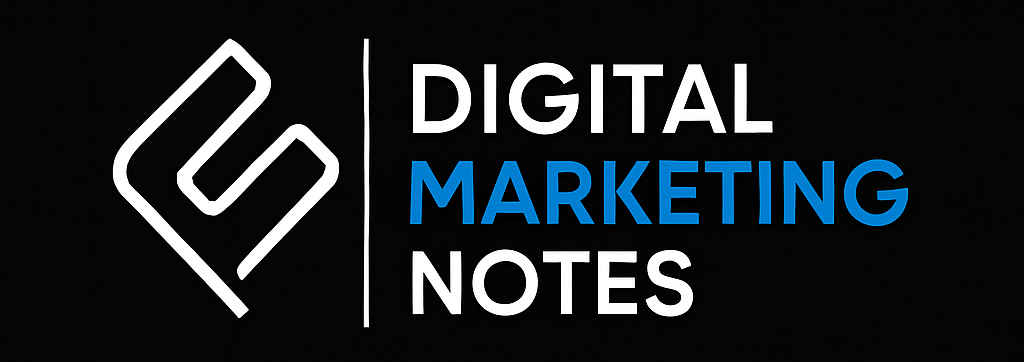Brian Clark’s 7A Framework:
<ahref=”https://copyblogger.com/its-all-my-fault/”>Brian Clark, the mind behind Copyblogger Media, made a 7-step plan. This plan shows how to grow an audience and turn them into loyal customers—one step at a time. It’s all about being agile, real, and strategic.
Here’s how the 7 A’s break down:
- Agile—be flexible. Start small, test, learn from feedback, and tweak as you go.
- Authentic – Be real. Understand what your audience wants. Tell their story in a way that builds a strong bond.
- Attention—stand out. Hook them with empathy and content that feels helpful—not pushy.
- Audience—Grow your tribe. Let them self-expand, provide feedback, and show you what they need next.
- Authority—Become a trusted guide. You’re not a voice—you’re the one they turn to.
- Action—Time to make moves. Launch that product, and guide them with care toward what matters, based on what you learned.
- Acceleration —scale up. Leverage your partnerships, products, and growth momentum to reach new heights.
Brian Clark’s take on Agile
On Copyblogger, Brian compares agile content marketing to stand-up comedy. Comedians start small, test their material, and improve based on audience reactions. The process breaks down into four steps:
- Research—Make educated guesses about what your audience wants.
- Release—Publish content even if it’s imperfect.
- Optimize—Use feedback, such as comments, shares, and data, to refine your content.
- Connect—Share through networks, guest posts, and social channels to spread the word. Then repeat the whole cycle.
Real-Life Examples
The local café blog believes that customers show interest in brewing tips (Research). So, they post a short how-to (Release). Then, they adjust based on likes and comments (optimize). Finally, they share it in local foodie groups (connect). Rinse and repeat.
YouTuber try-on video: Test an idea like a fashion haul (Release). Check the watch time and comments (optimize). Collaborate with similar creators or repost the video on Instagram (Connect). Then, adjust your content based on how the audience responds.
In Brian Clark’s 7A Framework, Attention
means grabbing your audience’s attention so they want to keep engaging with your content.
It’s more than clickbait. It’s about creating empathetic hooks that connect with their needs, problems, or desires.
How It Works:
Lead with empathy → Show that you understand their struggles and goals.
Spark curiosity → Give them a reason to read, watch, or listen more.
Be relevant: Match your hook to what they care about right now.
Real-Life Examples:
Blog headline:
❌ “How to Improve Your SEO” (too generic)
✅ “Struggling to Rank on Google? 5 Fixes You Can Try This Week”
→ Speaks directly to a pain point and sets a clear benefit.Airbnb listing:
❌ “2-Bedroom Apartment in Cairo”
✅ “Wake Up to Pyramid Views – Your Cairo Adventure Starts Here”
→ Creates an emotional image and intrigue.YouTube intro:
❌ “Today we’ll talk about marketing.”
✅ “If your ads aren’t working, it’s probably NOT your copy—let me show you why.”
→ Immediately tackles a specific frustration.Social media post:
Patagonia posts a photo of a worn jacket with the caption:
“This jacket is 10 years old. And we’ll help you repair it for 10 more.”
This unexpected twist captures the attention of environmentally conscious followers.
Authenticity
Authenticity in content writing means being real and honest. It’s about staying true to your brand voice and values. You should also meet your audience’s expectations. It’s about being human and sharing your true thoughts. Avoid generic or fake content.
Key points:
- Speak in your real brand or personal voice.
- Share true experiences, not exaggerated claims.
- Admit limitations or challenges.
- Use your own style, not a copy of competitors’.
Example: A travel blogger writes about visiting Giza and says,
“Giza is the most magical and perfect place on Earth; everything is flawless!” (Too polished, unrealistic)
✅ “I visited Giza last winter. While the pyramids left me in awe, I found the street vendors to be quite overwhelming. Here’s how I managed the situation. (Balanced, relatable, honest)”
Real-life examples:
- Patagonia is a clothing brand. It shares real stories from employees. It also talks about environmental challenges and successes.
- Humans of New York shares raw, unfiltered stories directly from people, maintaining the original content without excessive editing.
- Airbnb blog: Features real host and guest experiences, with authentic photos instead of stock images.
Audience
In Brian Clark’s 7A Framework, “audience” means creating and caring for a group of people who know, like, and trust you. This isn’t about chasing random clicks.
The goal is to create a community that engages with your content. This community will return often and become customers or advocates.
How It Works:
- Identify your niche → Serve a specific group, not “everyone.”
- Teach, entertain, or inspire them with unwavering value.
- Encourage feedback, comments, and sharing.
- Earn loyalty over time through trust and consistent delivery.
- Real-Life Examples:
Brian Clark built a loyal audience of writers and marketers by publishing free, high-quality articles before selling courses or software.
Airbnb Host Community
Airbnb connects hosts through tips, events, and stories. This approach helps them feel part of a global network, not users of a platform.
Humans of New York
Brandon Stanton started by posting street portraits on Facebook. Over time, followers grew into a giant audience. They buy books, donate to causes, and share content across various platforms.
A local yoga studio
The local yoga studio starts a weekly YouTube series that teaches short home routines. Over months, viewers become regular students—both in-person and online.
In Brian Clark’s 7A Framework, authority means becoming a trusted, go-to source in your niche so your audience sees you as credible, knowledgeable, and worth following.
It’s not about bragging—it’s about consistently showing expertise and delivering value so people trust your advice, products, or recommendations.
How It Works:
- Show, don’t just tell → Share insights, case studies, or proof.
- Be consistent. → Publish helpful content regularly.
- Demonstrate expertise → Teach, solve problems, and share unique perspectives.
- Leverage credibility markers: certifications, partnerships, and testimonials.
- Real-Life Examples:
- Neil Patel
- Posts in-depth SEO guides, offers free tools like Ubersuggest, and openly shares data—building him as a top SEO authority.
- Patagonia
- Known for sustainable practices, activism, and quality gear. They walk the talk, making them a trusted leader in outdoor apparel.
- Mayo Clinic
- Consistently publishes accurate, research-backed health advice, making it a leading authority in healthcare information.
- Local tour guide in Egypt (like your case)
- Shares historical facts, travel tips, and behind-the-scenes cultural stories on YouTube and Instagram. Over time, travelers come to view the local tour guide as the go-to person for advice before visiting Egypt.
Action
In Brian Clark’s 7A Framework, Action focuses on leading your audience to their next important step. This is based on the trust and connection you established.
It’s where your content goes beyond informing or inspiring. Here, it prompts a clear response. The response could be signing up, buying, booking, or sharing.
How It Works:
Clear CTA (Call-to-Action): → Tell them exactly what to do next.
Value-first: The action should feel like a natural win for them, not for you.
Aligned with the journey: → Match the ask to their readiness (don’t push for a sale on the first contact).
Real-Life Examples:
Copyblogger Email Courses
- They share free content on blogs. Then, they invite readers to join a free email course. This action is straightforward and requires little commitment.
- Airbnb Host Signup Page
- Encourages curious visitors (after viewing real host stories) to click “Become a Host” and begin the process in minutes.
- HubSpot Blog
- Ends posts with “Download our free marketing template”—turning readers into leads.
- Local tour company in Egypt.
- After sharing a blog post on “5 Hidden Gems in Luxor,” the CTA says, “Book your private Luxor tour now—limited spots available this month.”
- Acceleration
In Brian Clark’s 7A Framework, acceleration is about scaling up what’s already working—taking the content, audience, and authority you’ve built and using them to grow faster and reach more people.
This stage involves leveraging existing momentum, rather than starting from the beginning each time.
How It Works:
- Double down on top performers → Repurpose or expand high-impact content.
- Partnerships & collaborations: Team up with influencers, brands, or affiliates.
- Paid amplification → Use ads to push proven content wider.
- Product expansion: Launch new offers based on audience demand.
- Real-Life Examples:
Copyblogger
After building an audience with free blog posts, they launched paid courses, software (Rainmaker), and membership programs.
Airbnb
Started in a few cities, then scaled globally by leveraging host success stories and a proven platform.
Morning Brew
Morning Brew began as a simple email newsletter and later expanded by adding new verticals (Tech Brew, Marketing Brew), podcasts, and events after establishing a loyal audience.
Local Egyptian tour guide business
After consistent bookings from blog readers, you partner with hotels and airlines, create group tours, and run targeted Facebook ads to speed up growth.

